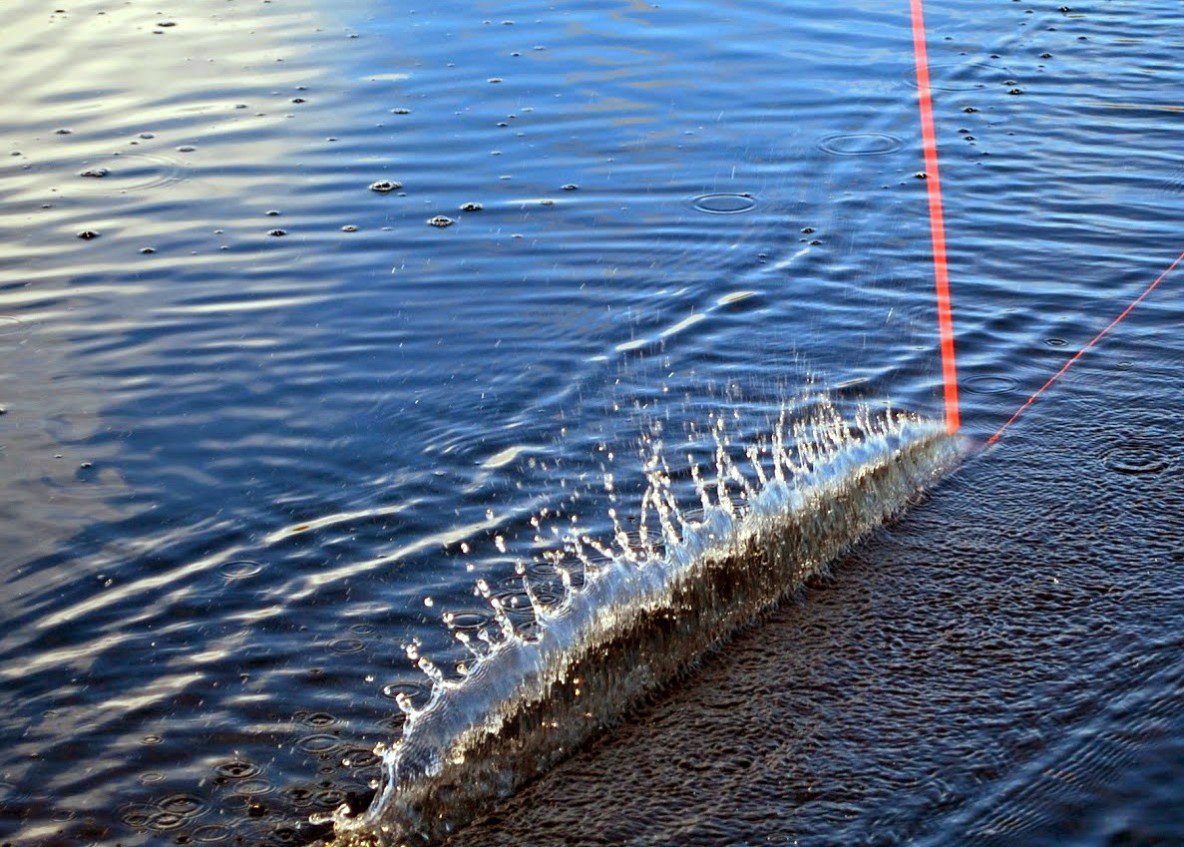The “Double Spey” is a two directional cast. One in which the fly will anchor on the downstream side of the caster. Therefore this cast provides a level of safety when you encounter an downstream wind. This will prevent you from wearing an “Streamer” as an earring. This is one of the easier spey cast to master. It can be done at a very slow pace. With that said , the cast must maintain a tempo that progressively accelerates into the forward stop position.
The ability to form the “Double Spey” at a slower pace makes this cast ideal for sink tips. It is just a good overall cast.
For a right handed caster the “Double Spey” is one of the primary “River Right” casts.
For a right handed caster the “Reverse Double Spey” can be utilized from “River Left” and is thrown over your left, off shoulder or “Cack-handed”.
Here’s a You Tube video of the late and great casting instructor extraordinaire, Bill Lowe, as to how to make a “Double Spey Cast”.
When and why to consider using the “Double Spey”
- Downstream Wind – D for Downstream remember “Double Spey”
- When you are fishing “River Right”
- When using heavy sink tips
- When using bulky flies
- Makes little disturbance on the water
- Minimizes line positioning and maximizes fishing time
Situations when to use a Double Spey Cast for a Right Handed Caster
- Double Spey From “River Right” with an downstream wind over your strong shoulder (Right Handed)
- Reverse Double Spey from “River Left” with an downstream wind over your off-shoulder (Kackhanded)
Fundamentals of the Double Spey Cast
The “Double Spey” is broken down into two phases which makes it a two-dimensional cast. The first portion is a line re-positioning move from the dangle straight downstream followed by a “Switch Cast” to cast the line in an across the river direction.
How to perform the Double Spey Cast
- For a right handed caster the cast starts with the angler on “River Right”.
- The line on the dangle directly downstream.
- Face your shoulders in the direction of the forward cast and to the target area.
- Start the cast with the rod tip at low to the waters surface With the right hand in the top position on the rod.
- The cast stars with a “lift and sweep” movement. This is a mild version of the “Shotgun Lift” as described in the “Single Spey”. cast. The lift is done by raising the rod tip vertically from near the surface of the water to about chest high.
- As the rod rises to the top of the lift in a continuous motion, sweep the rod with a low rotating swing from downstream to upstream, driving the loop of line upstream.
- Use the rod but to drive the line positions to attain a smooth thrust.
- The beginning of the sweep is where the maximum effort or thrust is applied to lift the line from the water. The amount of effort and/or height of the lift may vary with the length and type of line being cast.
- The sweep is done with the rod held at a low angle with the tip about shoulder height, driving the belly of the line upstream.
- The task is to sweep the line upstream far enough so the fly anchors just below the path of the intended final forward “Switch Cast”.
- The end of the fly line should be about one rod length downriver and slightly forward of the casters position.
- As the fly sets to the anchor point from the initial “lift an sweep” move, the rod is redirected in a smooth transition downstream, folding the line over itself.
- The rod returning downstream drives the line to the point where it crosses the path of the forward cast. In a smooth continuous motion the rod rotates to a new oath, in an inclining plane drawing back behind to 180 degrees from the direction of the forward cast and the target area.
- It is very important that the “D”loop is in straight alignment to the forward cast.
- The rod “Circles Up” forming an aerial oval which brings the rod to the “Key” position for the forward cast.
- From the “Key” position accelerate smoothly forward as the passes vertical and thrust a flick into the stop.
- The loop forms and zips out well above the water, just as in “Switch Cast”
Summary
The “Double Spey” is one of the basic casts that you need in your arsenal of casts and you will find uses for it in many fishing situations.

